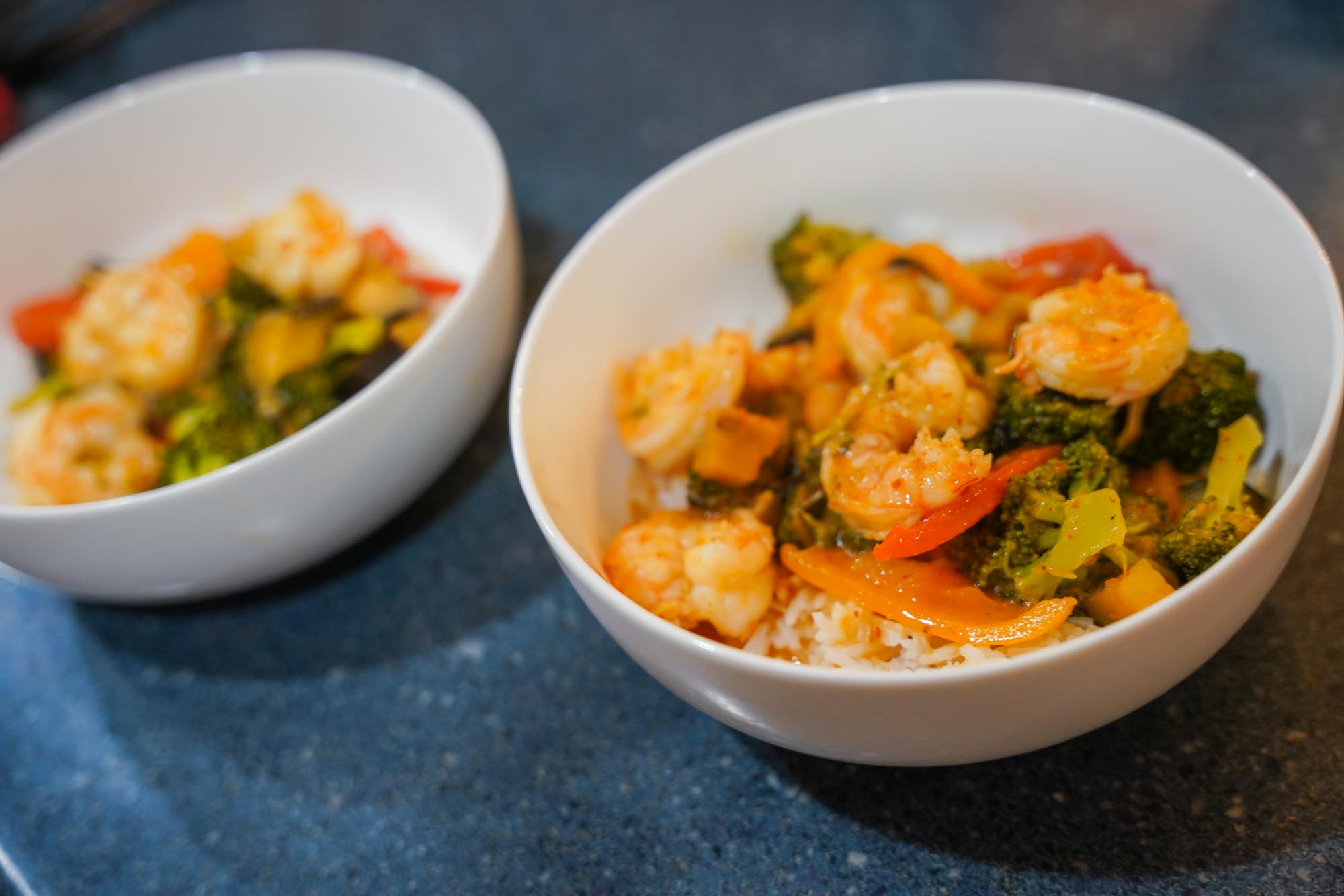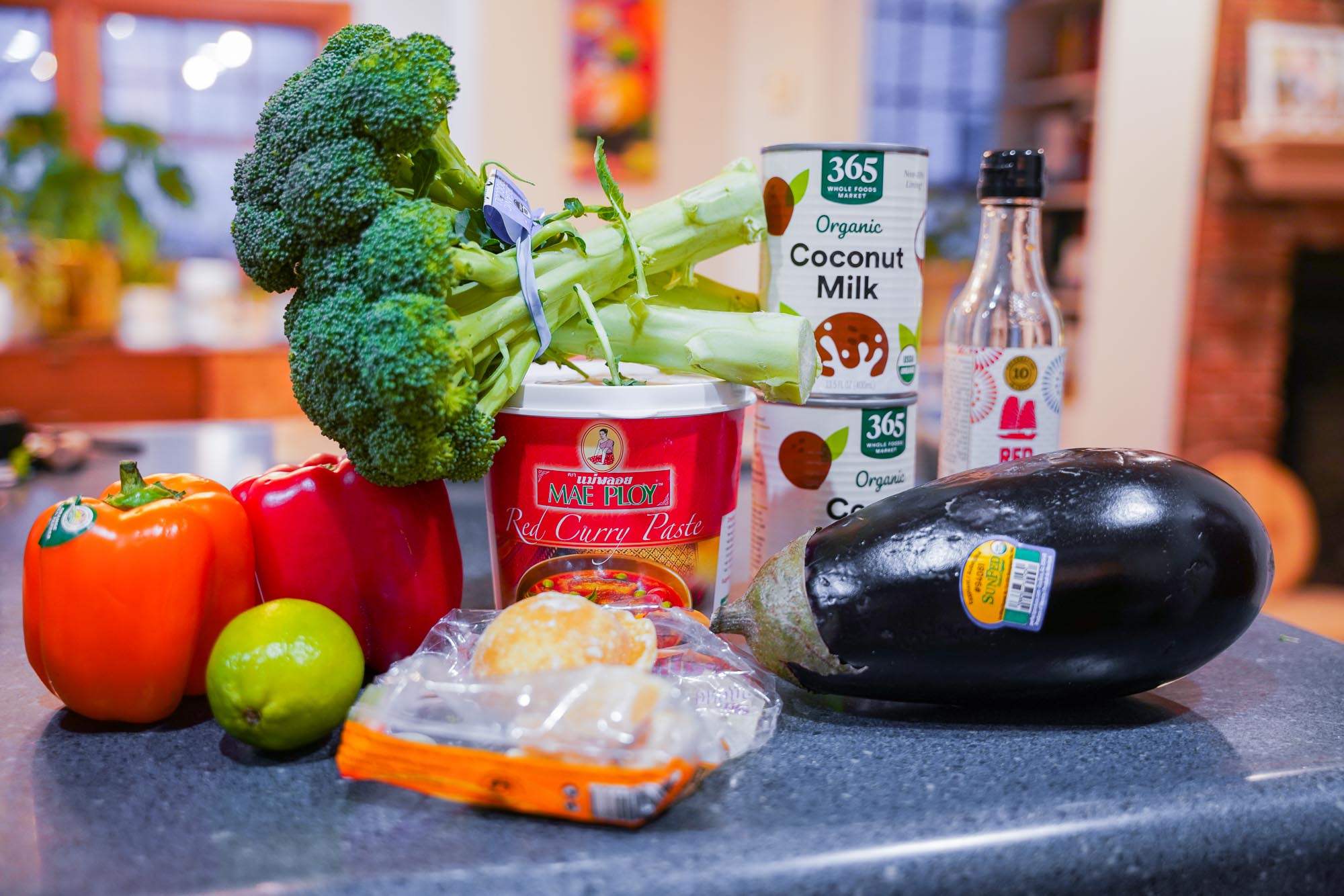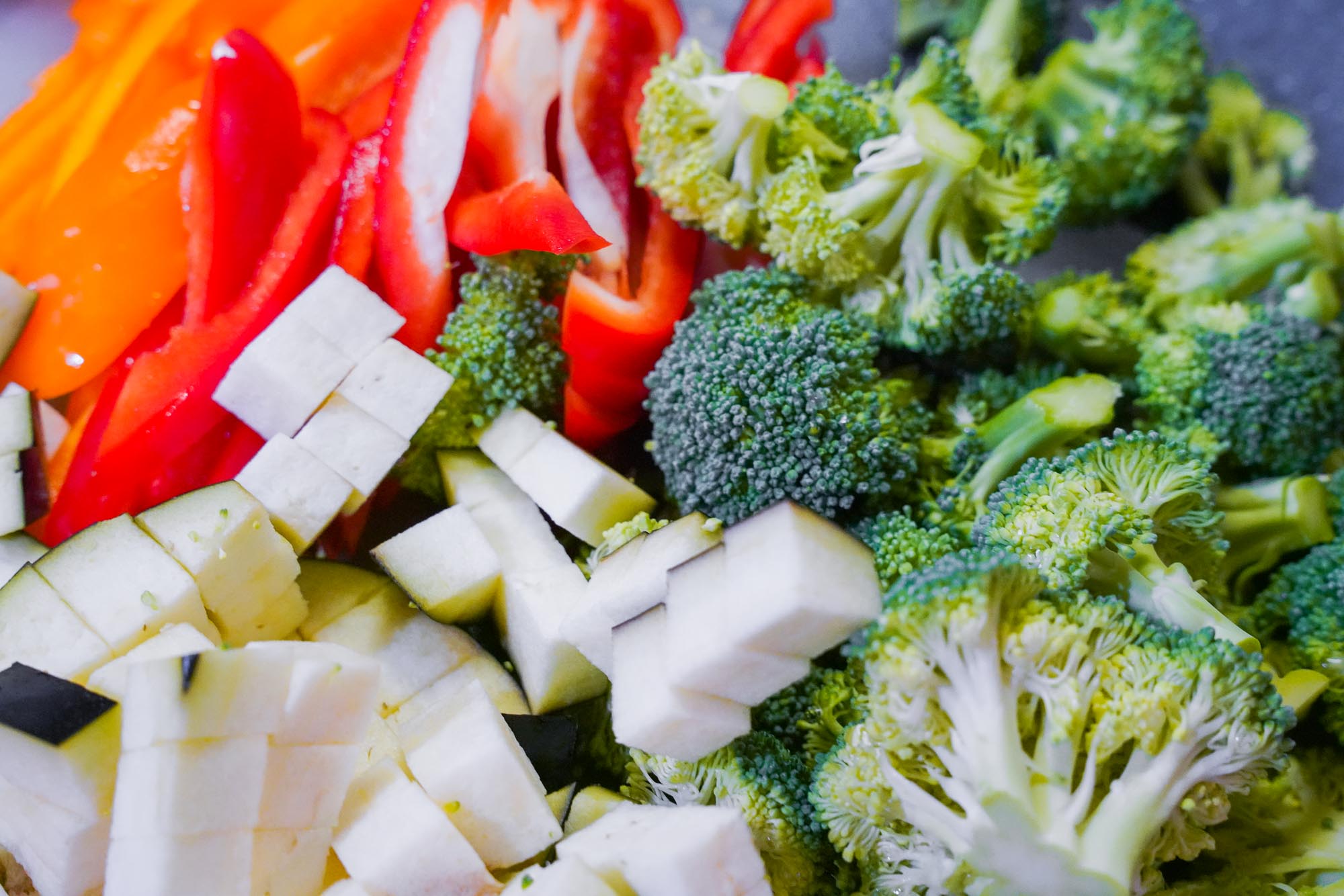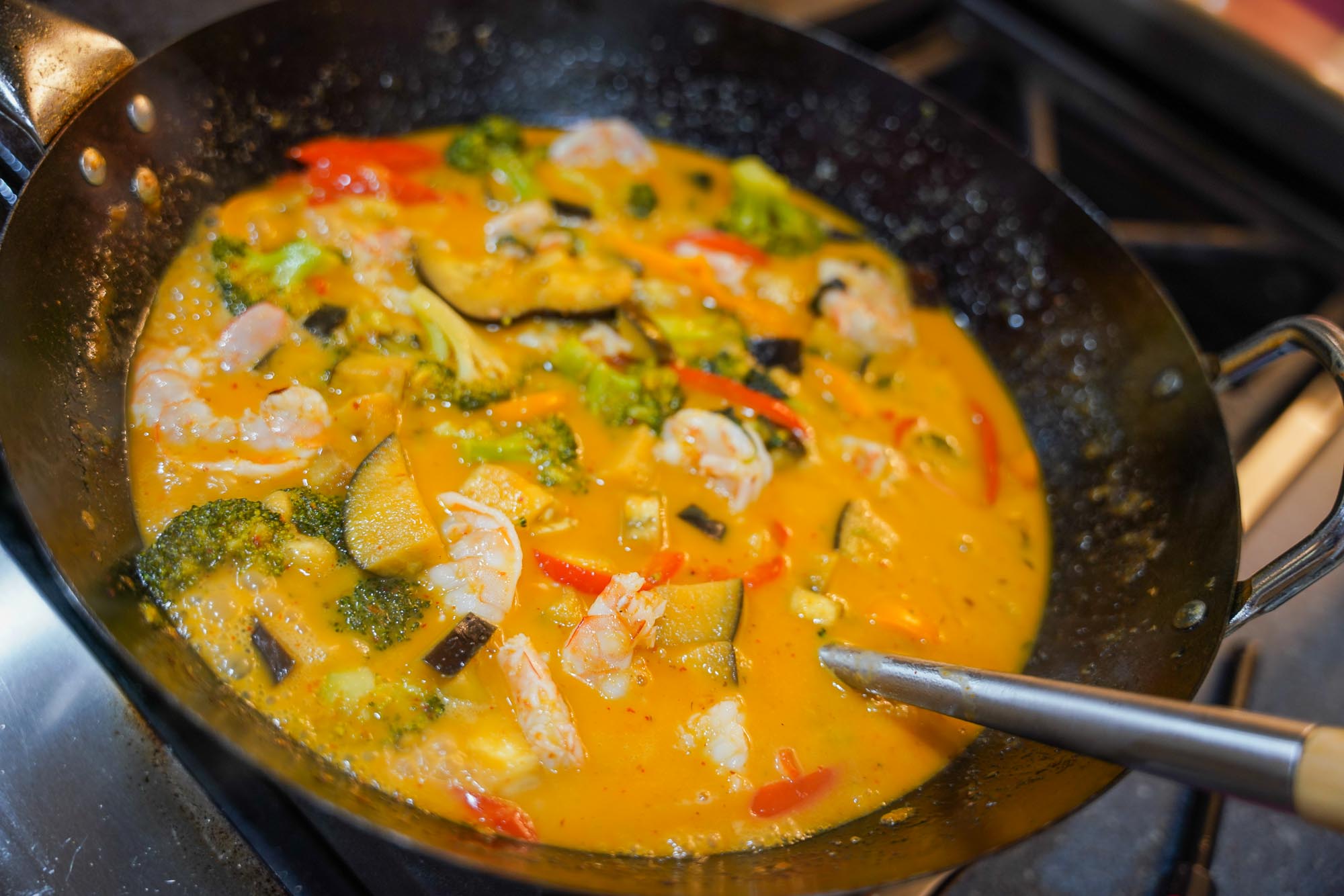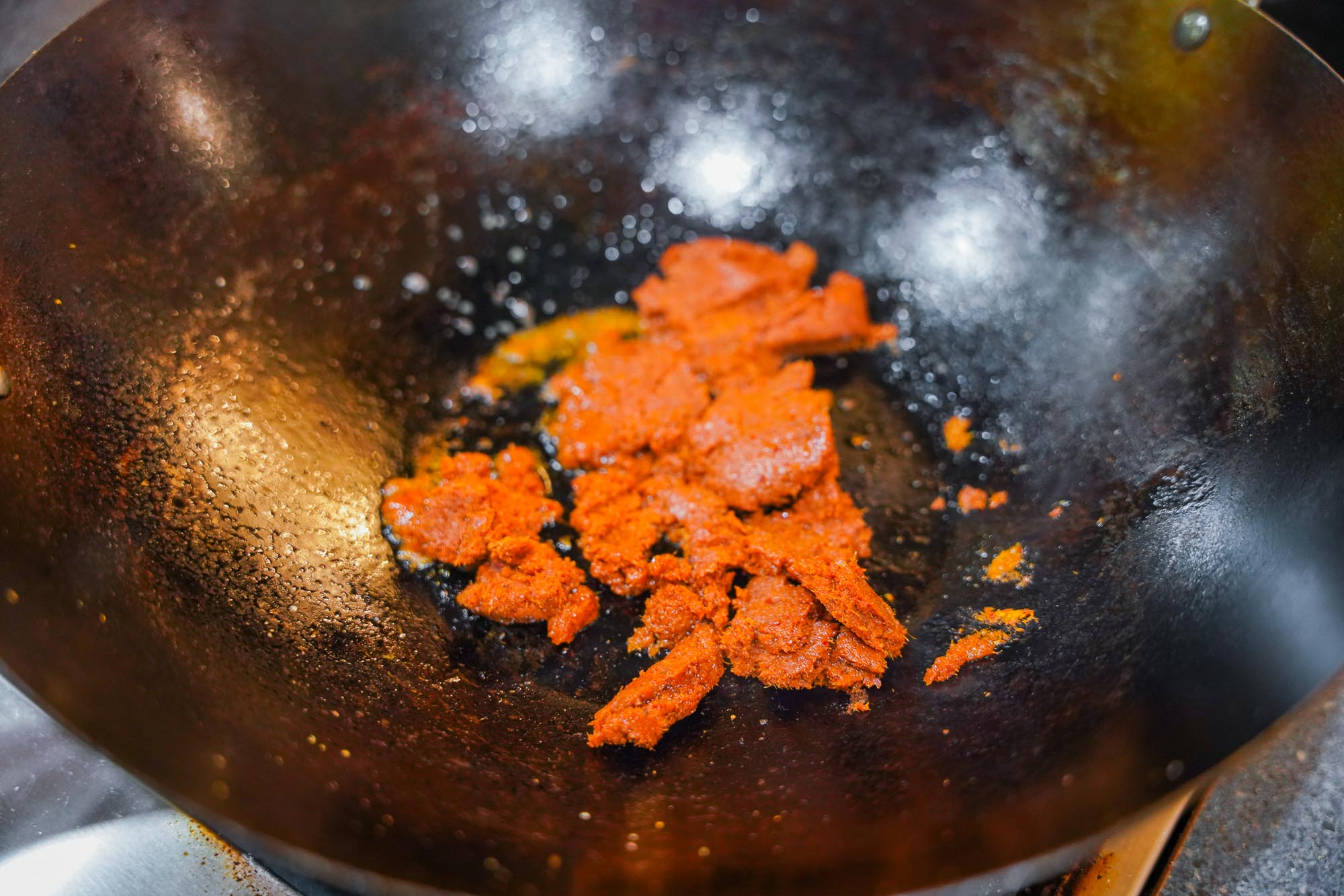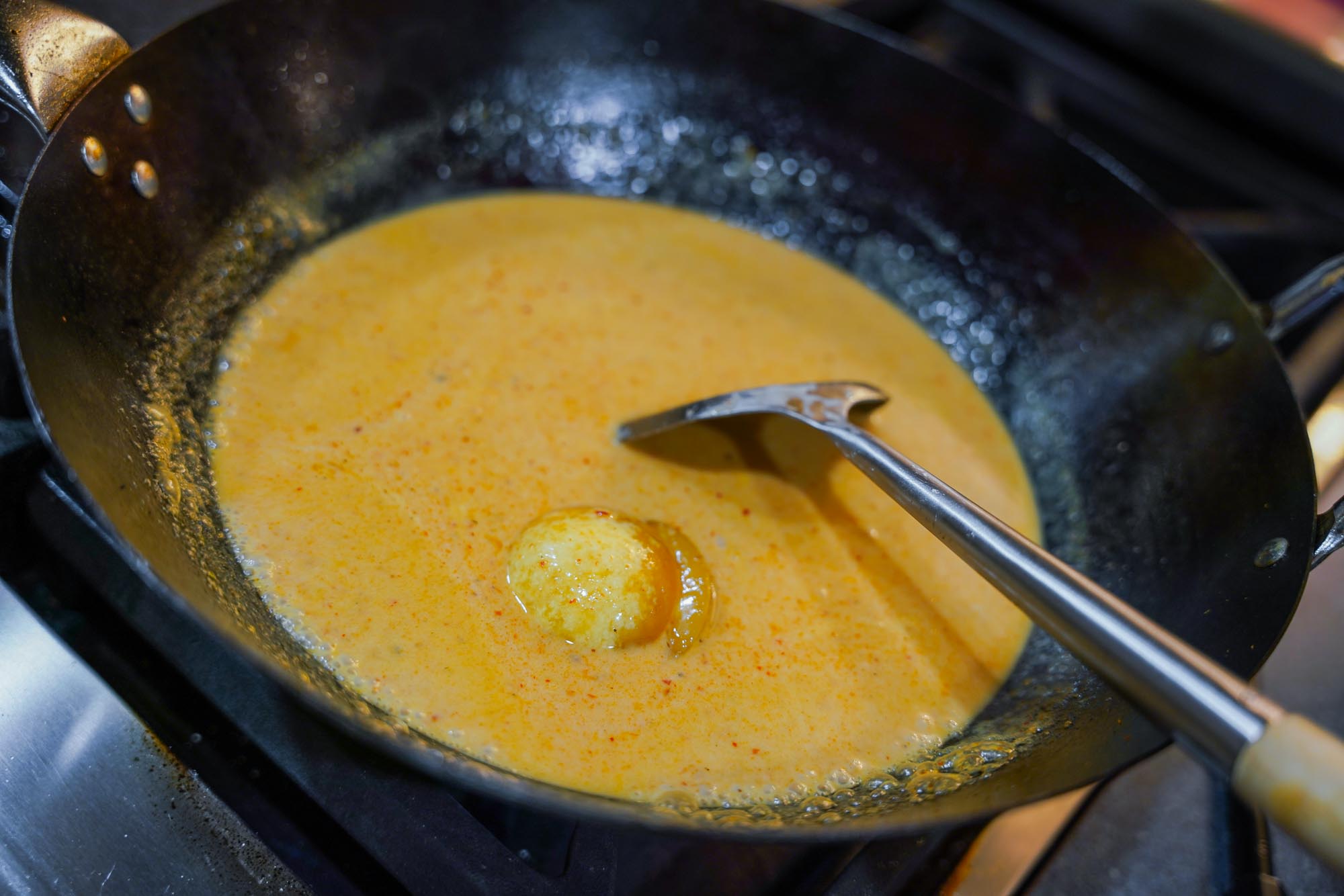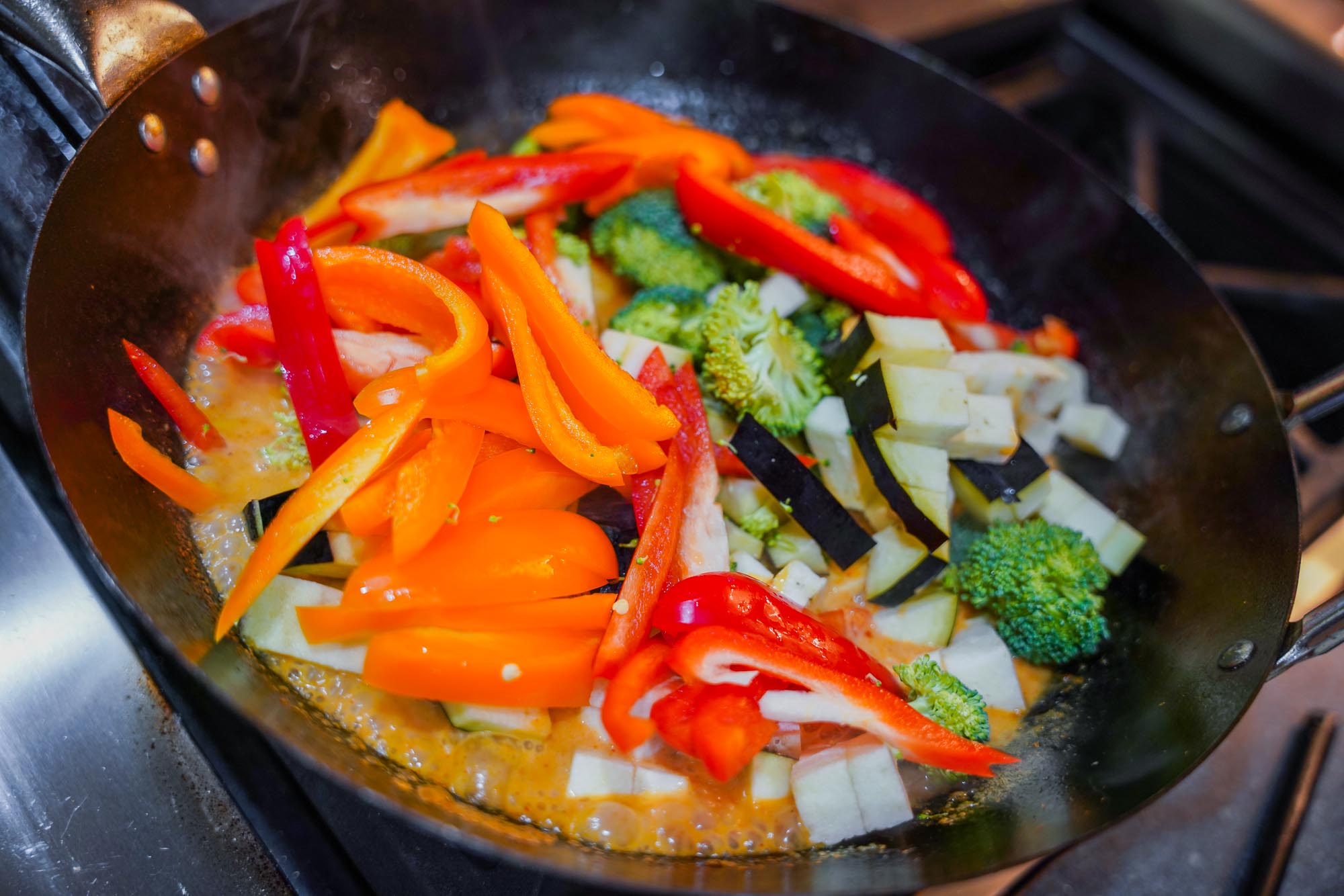Disclaimers: Our site uses demographic data, email opt-ins, display advertising, and affiliate links. Please check out our Terms and Conditions for more information.
When traveling around Thailand, we found ourselves not only eating everything the country had to offer but taking as many cooking classes as we could to learn how to make some of the country's best dishes at home.
Curry was one dish we couldn't get enough of, and Thai red curry with seafood was one we found ourselves ordering again and again.
Unfortunately, when it came to learning how to make Thai curry in cooking classes, most lessons involved making curry paste from scratch. This was a cumbersome process that, to be quite honest, most home cooks probably don't have the time or patience for.
So after we got back, we spent a great deal of time taking some of our favorite components from our various recipes and adapting them to use premade curry pastes that we could readily purchase at home. In this one, we wanted to share our red Thai curry recipe using Mae Ploy curry paste!
Red Thai Curry Recipe Ingredients and Recipe
Thai Red Curry With Seafood
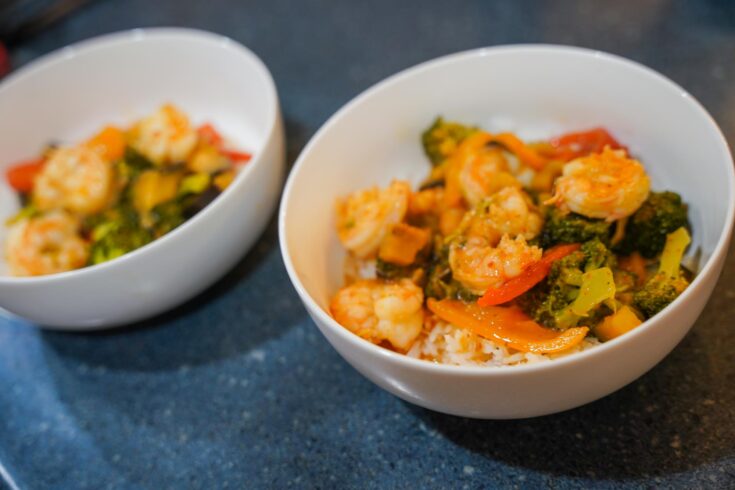
Our go-to Thai red curry with seafood recipe reminds us of the many curry meals we had in Thailand. This meal will transport you to paradise!
While you can substitute vegetables and proteins easily, this recipe is made for Mae Ploy brand curry paste and regular coconut milk only.
Additional variations are outlined within the full article.
Ingredients
- 2 tablespoons vegetable oil
- 2 cans of unsweetened coconut milk (14-ounce each)
- 3/8 cup Mae Ploy brand red curry paste
- 1-2 pounds of seafood of your choice (shrimp, crab, mussels)
- 3-5 tablespoons of palm sugar (75-110 grams if using palm sugar disks)
- 4 tablespoons of fish sauce
- 2 red or orange peppers, sliced
- 2-3 small heads of broccoli or one large head, cut into bite-sized pieces
- 1 large eggplant, 3-4 Asian eggplants, or 6-8 Thai eggplants, cut into bite-sized pieces
- 2 jalapeno peppers, seeded and finely chopped (optional for heat)
- 4-6 kaffir lime leaves (optional)
- Alternative to kaffir lime leaves: 15 Thai basil leaves, zest of one lime, and juice of one lime (optional)
- 8 servings of rice cooked per manufacturer instructions
Instructions
- Cut vegetables as indicated and set aside in a bowl for quick access.
- Defrost all seafood if frozen and set aside in a second bowl for quick access.
- Open coconut milk cans and set aside for quick access.
- Add vegetable oil into a wok or a deep stockpot and heat over medium-high heat.
- Add the curry paste and stir for 60-90 seconds until fragrant.
- Once fragrant, immediately add the two (2) cans of coconut milk and stir until the curry paste is dissolved and the mixture is fairly uniform in color. You may need to scrape solids out of the coconut milk cans with a rubber spatula as it can stick.
- Heat the liquid mixture until simmering and add all vegetables, fish sauce, and palm sugar. If using the optional kaffir lime leaves, add these as well. If using the Thai basil and lime alternative ingredient choice, add the basil only at this time. Mix the ingredients thoroughly.
- Keep the mixture at a light simmer and cook for 15 minutes or until all vegetables are done and the palm sugar is dissolved.
- Add your seafood and cook. Shrimp can be done in as little as 3-5 minutes but other seafood like mussels may take 5-7 minutes or more.
- If using kaffir lime leaves, remove the leaves and serve over rice in a bowl.
- If using the Thai basil and lime alternative, turn off heat, add the lime zest and lime juice, mix vigorously, and serve over rice in a bowl.
- When serving, we like to put the vegetables and proteins on our rice first (either via a slotted spoon or pouring off excess liquid) and then ladle on extra curry sauce extra to prevent the rice from becoming too soupy. One extra spoonful of sauce works well as a start.
Notes
- This recipe was created by using Mae Ploy brand curry pastes. Other brands vary wildly in their ingredient lists and should not be substituted.
- Only use regular, unsweetened coconut milk for this recipe. Do not substitute low fat coconut milk as it will alter the flavor significantly.
- This recipe as listed is roughly a 6 out of 10 on the heat scale for us. To reduce heat, omit jalapenos or reduce curry paste to 1/4 cup for a 3 or 4 out of 10 heat scale. Heat can also be increased by using up to 1/2 cup of curry paste or more jalapenos.
- We prefer to use pre-formed palm sugar disks in this recipe as opposed to granular palm sugar. Weigh out these disks and use 75-110 grams depending on your preferred level of sweetness (typically 2-3 disks but sizes can vary). Palm sugar disks are sometimes fused together and require 15-30 seconds in the microwave to pull apart.
- It is recommended to have one (1) extra can of coconut milk and additional palm sugar to adjust spice levels and overall flavor to taste (respectively). If you find the curry too spicy, add more coconut milk in 1/4 cup increments to taste. If you want the dish sweeter, add 1 tablespoon or 25 grams of palm sugar. Ensure the first palm sugar is fully dissolved and mixed well before adding additional coconut milk or sugar.
- Additional recipe variation ideas and further explanations of the above notes are provided within the full article at: https://hipsterhomesteaders.com/seafood-red-curry-recipe/
Ways to Change the Thai Curry Recipe (for Heat, Flavor, and Proteins)
One of our favorite things about Thai curries is that they are incredibly versatile dishes. Want to make the dish a little hotter? Add more curry paste or jalapeno peppers. Don't like a certain vegetable? Swap it out! Want to try out a different curry paste and protein source? The base recipe is a great starting point still!
Changing Thai Curry Spice Level
Our recipe calls for 3/8 cup of Mae Ploy curry paste and two seeded jalapenos finely diced. This would make a curry that is roughly 5 or 6 on a 10-point scale. Want to make the recipe less hot? Cut out the jalapenos to drop the heat to about 3 or 4 and/or cut the curry paste down to 1/4 cup. Don't have jalapenos but want to make the dish spicier? 1/2 cup of curry paste will get you back up to a 5 or 6 as well.
A good curry, in our opinion, cannot go below a 3 out of 10, so you'll always notice a bit of heat no matter what you do. It is pretty hard to make a curry with a store-bought curry paste that both tastes good and is less than a 3 or 4 of 10 purely because of the ingredients and amounts required.
Whatever you do, unless you are absolutely certain a spice level is to your desire, you should always plan to have an extra can of coconut milk on hand. Adding a bit more milk is a great way to neutralize excess heat. If adding coconut milk to drop the heat, add in roughly 1/4 cup increments, mix well, and taste. Perceptible heat can be also adjusted via adding palm sugar as well.
Changing Vegetables in Thai Curry
The sky is the limit with vegetables that you can use in Thai curry. Our base recipes normally involve bell peppers, broccoli, and eggplant but you really can add just about any vegetable you like.
Alternative vegetables that have worked well for us include baby corn, Thai eggplant/Asian eggplant, snow peas (or any pea with edible pod), and bok choy. Personally, we like any vegetable that can hold its texture for a nice crunch to contrast the softer proteins and rice. If you go in the direction of say, squash or pumpkin, just keep in mind that these could require much longer cooking times relative to the other vegetables.
Kaffir Lime Leaves vs Lime and Basil in Curry
One ingredient you often see in Thai curry recipes, including ours, that may be hard to come by is Kaffir lime leaves. These little leaves have a rather unique flavor combination that is somewhat of a cross between a bay leaf, basil, and lime zest, and, much like a bay leaf, you do not eat these and should discard them after cooking.
Imports of kaffir lime plants have been restricted as the plant is known to carry disease. But as producers are seemingly allowed to grow plants domestically, the market has been growing in recent years. As such, where 10 years ago you may have been hard-pressed to find these leaves in the freezer section of Asian grocery stores, they are becoming more and more common as time goes by.
But what if you cannot find Kaffir lime leaves? One alternative we've been liking has been using lime and Thai basil to mimic the flavor. Pick off about 15 leaves of Thai basil and add to the curry with the vegetables. Just before serving, add in the zest and juice of one lime (minimal pith if you can in the zest), and give a good stir to mix and then serve immediately thereafter. The flavor is just a bit different, but it is also close enough for our tastes all the same.
Palm Sugar Can Get Messy
For Thai curry, we often use palm sugar disks directly as they come in a fairly standardized size across many producers. When packaged, these disks can often fuse together such that you have little oblong balls of palm sugar made of two disks (fused back-to-back). Sometimes these are easy to pull apart, and sometimes they need 15-30 seconds in the microwave to loosen up and separate. Go too much longer and you'll have a molten and sticky mess on your plate/bowl, so we do not recommend heating up enough to fully melt.
Two disks would roughly be 4-6 tablespoons equivalent by our estimates. If you like your curry sweeter, you can add up to a whole separate disk (after separating) to add extra sweetness to taste. The amount of sugar you will want to add could likely change based on your curry base and protein type as well. We go a bit higher on red curry with seafood and less on chicken and beef-based recipes, but that is purely for preference.
Changing Thai Curry Base and Proteins
Another fun thing with curry is that you can swap out the curry base and your protein for various flavor combinations. For red curries, we generally prefer seafood, but sliced beef or pork could work too. For green curries, we almost always go chicken. Yellow and masaman curries you could perhaps go towards beef, chicken, or vegetarian outright too!
This recipe is a great starting point with any of these combinations with the same rough starting weights. However, when trying new curries we would recommend going lighter on the heat (per the above discussion) and perhaps lighter on the sugar as well to start and then add more up to the original recipe's amounts to taste. You may perceive slight flavor changes in the final dish thanks to the protein used, and this includes how intense the heat is. So when trying a new combination, always go a bit lighter on these extremes and adjust to taste at the end.
Be Wary of Other Curry Paste Brands
One thing we have to reiterate with this recipe is that we have developed it around the Mae Ploy brand of curry pastes. These appear to be the common brand sold in virtually every Asian grocery store we've been to, and you can get a huge tub for just a few dollars- you really won't go wanting for curry paste for a while with these.
As the flavor you get in your Thai curry is directly tied to your starting curry paste, matching brands is incredibly important when making recipes you read online. Not all pastes are created equally, and we've found that many generic curries you find in non-Asian grocery stores end up being incredibly small, far too expensive for the volume, and, the worst part of all, they also taste awful.
As such, if you make this (or any other Thai curry recipe) with a curry paste that is of a different brand than is recommended, expect your final product to be completely different than the author expected. As such, we can only recommend the use of Mae Ploy in this particular recipe.
What is your favorite type of Thai curry recipe? Comment below to share! And if you're looking for more, don't forget to check out our Thai curry webstory!

